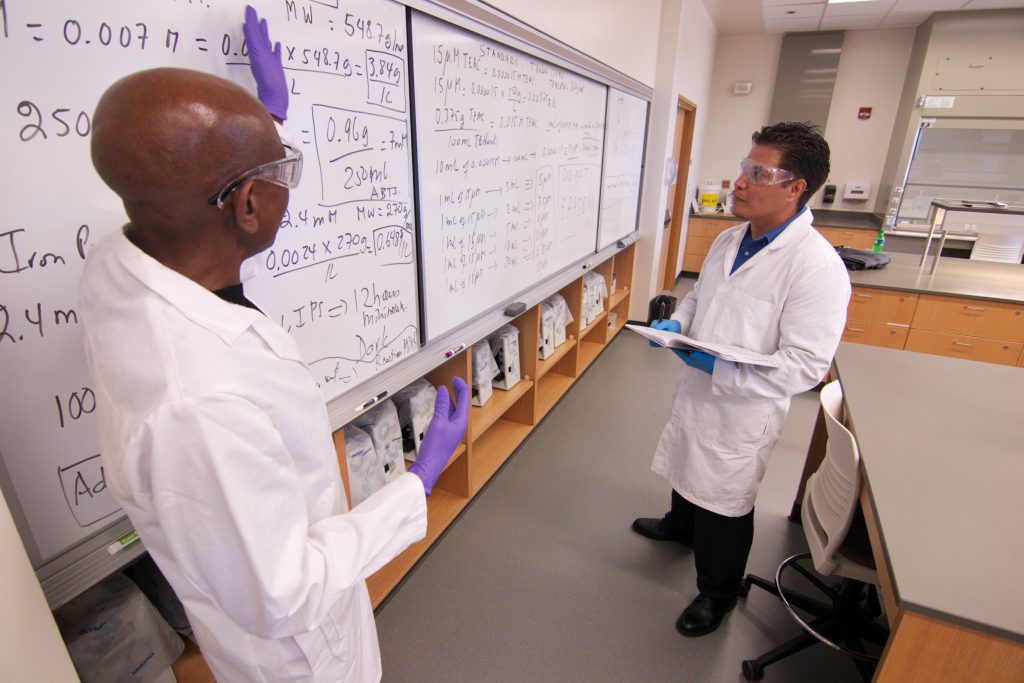
The University of Hawaiʻi–West Oʻahu awarded 15 students with up to $2,000 stipends as part of the Kikaha Undergraduate Research Program – a unique opportunity to create projects that develop and enhance academic and research skills.
“This year’s Kikaha Summer Undergraduate Research Program selection emphasized three things: the quality of the proposal, its STEM content, and last but not least, the proposal’s focus on Hawaiian topics,” said Dr. Esther Widiasih, UH West Oʻahu assistant professor of mathematics and the Principal Investigator of the NSF grant that fund the program. “Funded proposals ranged from disaster management to various investigations of the Kalaeloa anchialine pools to mathematical modeling of solar PV panels cost projection. The student investigators’ concentrations and study interests also varies from middle and secondary math education to Psychology.”
The Kikaha Undergraduate Research Program encourages UH West Oʻahu students to work in Science, Technology, Engineering, and Mathematical (STEM) related fields. Participants are eligible to receive a stipend of $2000 for completion of their project as well as a chance for additional funding to travel to a local or national conference. The project is supported by the National Science Foundation under the Tribal Colleges and Universities Program (TCUP).
Marc Moriguchi and his faculty advisor Camonia Graham-Tutt, assistant professor of community health, are tying in existing research regarding flooding and emergency preparedness in Hawaiʻi and applying it to practical uses for our community in “Flooding on Oʻahu: A systematic review of rainfall frequency, intensity and urbanization on the island of Oʻahu.”
“This information will help communities be better prepared for natural disasters and give government leaders information on why they should be proactive in helping to protect our communities,” Dr. Graham-Tutt explained. “The Kikaha Undergraduate Research Grant is important because it will help Marc conduct research that brings to light the effectiveness of preventative maintenance of our waterways on Oʻahu, an aina-based topic in need of more awareness.”
“The diversity, both in students’ interest and research topics, reflect students’ thirst for STEM engagement in our campus,” Dr. Widiasih said. She added that the recent Mālama Honua Voyage serves as a reminder of the importance of research, discovery, and innovation.
“We must train our next generation not only to recognize the challenges of their time, but also to develop their own way of finding the solutions,” Dr. Widiasih said. “Closer to home, one of UHWO missions is to develop life long learners. And one way to accomplish this mission is to create a space for our faculty and students to engage in a meaningful research investigation. The UHWO Kikaha Summer Undergraduate Research Program, funded by a grant from the NSF – Tribal Colleges and Universities Program, is created exactly to nurture that drive to discover.”
Students with a wide variety of educational backgrounds are participating in a diverse array of research projects. The following is a list of students, their faculty mentors, and projects that they are working on.
Student Mentor Project Title
| DJ Anne Manog | Olivia George | Investigating Antimicrobial Producing Microorganisms in Hawaiian Soil |
| Marc Moriguchi | Camonia Graham-Tutt | “Flooding in Oʻahu:
A Systematic Review of Rainfall Frequency, Intensity and Urbanization on the Island of Oʻahu |
| Cobi DeSilva | Olivia George | Investigation and Characterization of Microorganisms from Anchhialine Pools in the Kalaeloa Wildlife Refuge, Kapolei, Hawaiʻi |
| Destiny Mabalot | Olivia George | Investigating Local Soil Bacteria to Find Potential Antibiotics Against Common Human Pathogens on the UHWO Campus |
| Shane Yaw | Joseph Bariyanga | Antioxidant activities on some common vegetables in Hawaiʻi |
| Arion Northrop | Megan Ross | Community composition and antimicrobial properties of native limu at Oneula Beach Park, Hawaiʻi. |
| Robert Kalani Careira | Jennifer Byrnes | Forensic Taphonomy: The Impact of Pigs Scavenging Behavior in Hawaiʻi |
| Christine Balthazar | Olivia George | Characterizing Cell Division Defects and Early Developmental Effects of Possible Plastic Pollution on the West Coast of Oʻahu Using Tripneustes gratilla |
| Morgan Dutkoski | Kamuela Yong | A mathematical mode of the 2015 dengue outbreak in Hawaiʻi |
| Alex Bautista | Kamuela Yong | A Mathematical model of Hepatitis A |
| Te’a Strong | Esther Widiasih | Sized-based demographic modeling of Opae Ula shrimp |
| Nohelani Maikai | Esther Widiasih | Ka Waiwai o Ka Hawewe Ikehu La (Cost Projection for Solar PV vs. conventional power source at UHWO) |
| Kristin Umakoshi | Michael Furuto | Student Engagement: Group Work in the College Classroom |
| Kriselyn Cortado | ||
| Thalia Lawrence |
